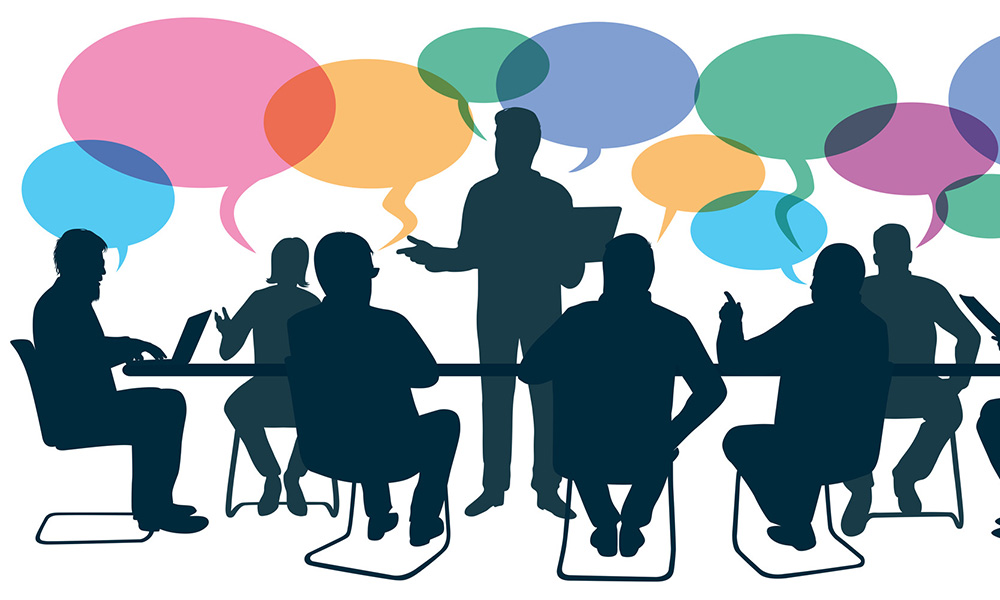To succeed, we need to be bold and agile. However, the further we go into unknown territory, the more we crave stability – because uncertainty makes us uncomfortable and scared of failing.
Leaders are especially prone to falling in the trap of conventionality. As you gain in experience and expertise, you start to prefer well-established methods. You may have started out as an innovative risk-taker but with growing seniority, you have probably become part and parcel of the status quo.
The ability to meet challenges with a willingness to depart from standard operating procedures; to confront anxiety, tolerate criticism, take intelligent risks, and refute conventional wisdom-especially one’s own views-in order to achieve breakthroughs.
So, this week, my message focuses on the value of unsafe thinking and how you can overcome the magnetic pull of familiarity to become an unsafe thinker.
When Sachs began working on his book, he believed that unsafe thinkers were simply born that way:
I subscribed to the popular notion that such rebels are naturally inclined to defy norms, that they are, as a famous Apple ad dubbed them, “the crazy ones,” who just think differently than the rest of us…. I discovered instead a group of people who had learned to continually face their anxiety-to accept a high degree of discomfort with the risks they were taking and the reactions of critics-in order to challenge themselves.
While unsafe thinking can be nurtured, there’s no hard-and-fast formula for it. Rather, success lies in embracing and using all available tools, instead of simply your old favourites.
Sachs describes six elements of unsafe thinking to help you develop a more open, innovative approach. Here are a few aspects that I found most useful:
1. Courage
When you encounter an unfamiliar challenge, the natural response is to retreat into old ways of thinking, despite knowing you need to get more creative – “let’s just do what we did last time – that worked!”.
While it’s impossible to eliminate threats altogether, you can certainly choose how to deal with the resulting anxiety. As Sachs clarifies, this doesn’t mean avoiding negative emotions (which actually makes matters worse). Rather, you must learn to get comfortable with a bit of discomfort, so that anxiety doesn’t send you into a tailspin. Cognitive restructuring can help. Start by accepting your automatic emotional reaction; then, reimagine your fear as fuel for growth.
2. Motivation
How can you sustain new radical approaches, even in the face of setbacks and failures? Sachs questions the popular notion that trailblazers are motivated primarily from within:
Can we really expect to achieve a state of pure intrinsic motivation without quitting our jobs and heading for the Himalayas? And don’t those…who both love what they do and also crave recognition or money do plenty of great things? Geniuses like Isaac Newton and Charles Darwin were deeply driven by the love of their studies but also highly concerned about the praise and criticism of their peers and the public.
Studies have found that external reward/punishment can dampen creativity and engagement. However, if you are aware of and take control of your motivations, then you can achieve “motivational alchemy” – a combination of intrinsic and extrinsic incentives. This involves discovering passion and purpose in your work, then using the desire for wealth, respect or status to keep yourself going.
Sachs also highlights the concept of “flow channels”, which allow teams to maintain high levels of energy and interest while doing the difficult, taxing work of bringing new ideas to life. In a state of a flow, the journey isn’t a grind – it’s exciting and enjoyable. Getting into a flow channel calls for three conditions: 1) you have a clear understanding of the goal, 2) you’re getting enough feedback to know you’re making progress, and 3) your level of skill is at or just below the level of challenge.
3. Learning
Researchers have repeatedly demonstrated that domain-relevant knowledge and skills are crucial for effective creativity. But if so, why do we often see a dip in learning and performance once we become experts? As Sachs explains:
Past a certain point of expertise, the more we learn, build confidence, and achieve authority, the less sensitive we risk becoming to the signals and possibilities in our environment.
An expert’s brain is like a well-organised library: vast amounts of knowledge are neatly stored and catalogued, so the right piece can be pulled out as and when required. However, with this structure comes rigidity. Decision-making researcher Gary Klein explains that while expertise is useful for playing an established game, it hinders your ability to cope when the game changes. One way to avoid this trap is by placing yourself in situations where you’re a beginner. So, get out of your comfort zone and explore: travel (or move!) to an unfamiliar place, learn a new hobby, or venture into a different domain at work.
4. Flexibility
The biggest breakthroughs often come from ideas that sound insane at first – from metal machines that fly in the sky, to staying in a stranger’s apartment while on holiday. This kind of counterintuitive thinking can be cultivated. To open up new pathways of thought, look for inconvenient truths in your industry or company. Sachs offers the following questions as a starting point:
- What do our most persistent critics or unhappy customers say about us, and what’s the grain of truth therein? How might we finally address their seemingly intractable concerns?
- What do we say we do (in our mission or core values statements) but never actually get around to because we’re sure it’s too expensive or difficult?
- Does our strategy actually align with the latest science about how people behave, communicate, and get persuaded?
You could also try reframing the problem and bringing in outside perspectives to uncover new insights. Counterintuitive ideas spring from your mysterious inner intuition, which often holds the spark of genius – especially in situations where the established rules no longer hold true. However, as Sachs warns, intuition can be a handy guide – but it’s also fickle and unreliable (thanks to the hundreds of cognitive biases hardwired into each of us). While some seemingly crazy ideas turn out to be winners, others bomb spectacularly. So, how can you tell whether your radical plan is actually brilliant or terrible?
The key lies in interrogating your gut instincts. Sachs explores with concept with Robin Hogarth, an expert in intuition research:
Hogarth told me, we should treat our intuitive insights like ingenious hypotheses. We shouldn’t ignore them…They belong at the front of the line of our attention when making difficult decisions in uncertain environments. But as with hypotheses, we should never trust our intuitions until we’ve questioned them, pressure-tested them, and patted them down, searching for cognitive and emotional bias.
Sachs recommends tweaking your learning environment to: 1) include plenty of evidence that goes against your assumptions, and 2) increase the frequency and clarity of feedback. Gathering cold, hard data over time could also help verify your gut feelings.
5. Morality
This is a tricky one. Most of us would agree that we follow rules and do the right thing. However, as Sachs says: a strong commitment to do the “right” thing can sometimes be a dangerous commitment to do the same old thing.
Creativity sometimes requires going against established norms. Organisations can be resistant to change (even when they’re trying not to be!), so you might have to figure out unusual ways to get your radical idea approved and off the ground. Of course, this doesn’t mean breaking rules indiscriminately or being dishonest; rather, you need “intelligent disobedience”. For example, you could speak up openly against creativity-killing policies with which you disagree. Sachs also points out that rule-breaking in the interest of customers or the organisation is far more forgivable than violations for personal gain. However, he warns that none of these steps are guarantees against negative consequences.
Conversely, in our role as leaders, we must make it a priority to be open to fresh thinking, so team members don’t feel forced to rebel or secretly develop potentially great ideas without our support. Don’t encourage unthinking assent and herd mentality. Recognise individuals who push back productively against limiting practices and policies.
6. Leadership
How can you get others on board to break the status quo? How can you increase the creativity and confidence of people around you? Sachs recommends two seemingly opposing strategies:
Through the force of disruption, we break the limiting consensus that often comes before a group has fully understood a situation….we push our teams to look at hard truths and engage in productive conflict, uncomfortable as this might seem. Disruption, of course, is psychologically taxing and threatening. People can only take so much of it before they burn out and shut down. That’s why the counterforce of security becomes so necessary. As leaders, we become more successful when we make our team members feel as safe as possible in embracing unsafety.
Leaders have incredible power when it comes to disrupting sheep-like consensus. Alfred P. Sloan, president of General Motors in the 1920s, once ended a meeting by saying, “Gentlemen, I take it we are all in complete agreement on the subject here.” When everyone nodded eagerly, he added, “Then, I propose we postpone further discussion of this matter until our next meeting, to give ourselves time to develop disagreement and perhaps gain some understanding of what the decision is all about.”
One way to encourage your team member to share less obvious, outlying insights is to avoid speaking first at meetings. When a leader sets the initial tone, it becomes difficult for others to go against that perspective. Ask for information that everyone in the room doesn’t already know. Alongside, you must create a culture in which people can securely challenge conventional views and take risks. As a team, set norms that allow you to disagree energetically with one another, without compromising on respect. The right kind of incentivisation can also help. For example, because failures are a necessary by-product of innovation, it’s important to reward effort – not just results.
As we all know, the world around is changing quite rapidly. We need to change our thinking to be able to thrive in this environment. Safe thinking just won’t cut it. We need to enable our team members to feel safe enough to get unsafe. That’s how you can unleash greater boldness and creativity in the organisation.
As always, I look forward to your thoughts.








Comments